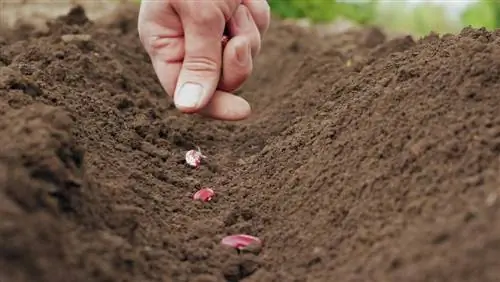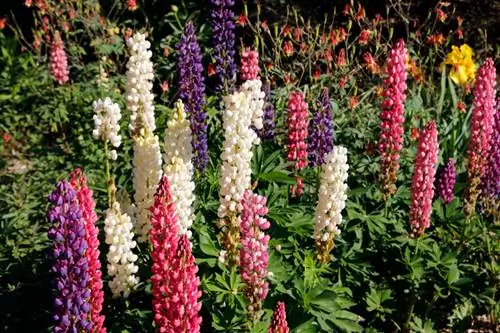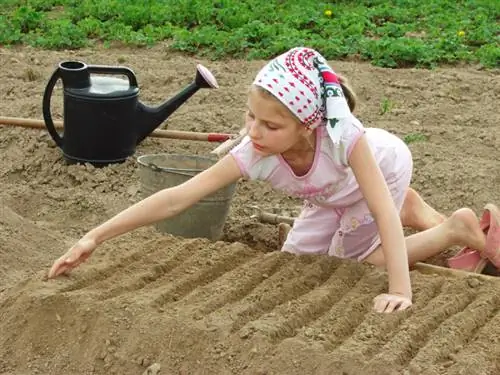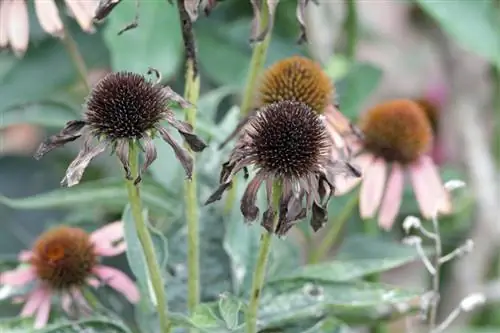- Author admin [email protected].
- Public 2023-12-16 16:46.
- Last modified 2025-01-23 11:22.
Cultivating beans is worthwhile because the harvest is high-yielding and the plants require comparatively little care. However, you need to pay attention to some special features so that the seeds germinate successfully and do not start to rot.
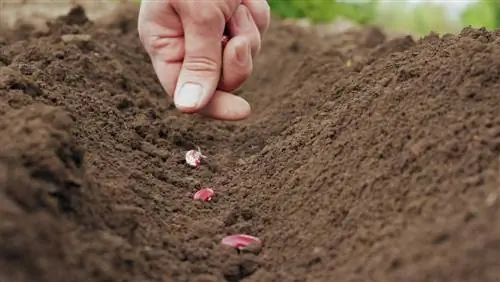
How should you plant beans correctly?
Beans should be sown from mid-May in rows 3 cm deep and 40 cm apart. Place two bean seeds next to each other every 15 cm and remove the weaker seedling if both germinate. Avoid waterlogging to prevent rot.
Soil and location requirements
Bush and runner beans have no special requirements for the conditions in the garden. They thrive on light to medium-heavy substrates that are rich in humus and deeply loosened. A neutral pH value as well as warm and sunny conditions improve growth. In contrast to their larger relatives, bush beans also grow in partial shade.
Everything about sowing
Since the beans need warmth, you should not plant them before May. Sowing in the bed is possible from May 10th. If late frosts threaten, cover the seed rows with a fleece (€34.00 at Amazon). Subsequent sowing is recommended by July 10th. If the weather is favorable, the specimens sown in the second half of July produce good yields until mid-October.
How to do it right:
- Enrich the substrate with compost
- form rows three centimeters deep
- pay attention to a row spacing of 40 centimeters
- Lay out two bean seeds right next to each other every 15 centimeters
- remove the weaker seedling if both seeds sprout
Pre-culture
From the beginning of April, the seeds of early varieties can be grown in small plastic pots on the windowsill. There is space for four to five copies per container. There should be frost-free conditions in the cold frame or greenhouse. If there is a risk of frost, bring the planters into the house overnight.
Care
Press the soil lightly. Watering is often not necessary in May as the substrate moisture is sufficient. Too much water will quickly cause the seeds to rot. For later sowings between June and July, water the bed when weather conditions are exceptionally dry. You should loosen the soil twice before flowering.
Tip
Yellow-podded varieties prove to be slightly more demanding than green specimens. Here you need to put a little more attention into the care measures.
Mixed cultures
Since bean plants take a long time to reach their full height, you can use the space for other purposes during this phase. Sow radishes in the bed. They are ready to harvest before the beans take up the entire area. Salads, cucumbers and celery prove to be optimal planting partners for mixed crops. Nasturtiums and savory protect neighbors from pests. On the other hand, you should avoid leek and onion plants as well as species from the same plant family.
Soil improvement
Beans are suitable as a secondary crop for heavy-consuming vegetables because they improve the soil sustainably. Like all legumes, nodule bacteria, which live on the plant roots in symbiosis with the crops, bind atmospheric nitrogen and release it to the plant. Therefore, let the harvested specimens rot on the bed so that the nutrients are supplied to the soil.

